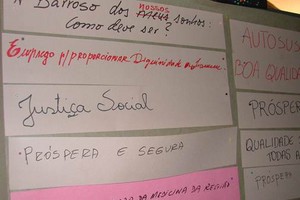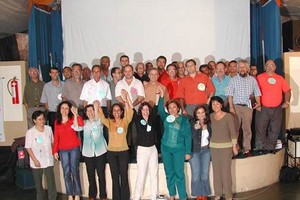Ortopolis Barroso
Although the city of Barroso is located on the historic touristic route from Barbacena to São João del Rey (in Minas Gerais), it is the only industrial town in that region, as a result of some governmental initiatives in the 1950s.
In the 1970s, with the implementation of a cement company by a national group, the dream job was to work in this industry. It was a family type of business and the relationship with the community followed a hierarchic and paternalistic style.
Due to the plant acquisition by an international group in 1996, technology changes and a decreasing market demand, in 2003, there were 420 workers (among direct and indirect positions) out of the 1,500 job positions of the 1980s.
Even being aware of the changes, the population still waited for the company`s answers to its ever-increasing problems. "Everybody watched as things happened; nobody accepted the changes and started to work. Those few who did it were distrusted. The city did not accept local businessmen very well", explains Celio Reis, "and did not believe initiatives might succeed".
The company, through is Institute, was the starter of a process for the re-definition of other economic activities that could be developed by Barroso citizens. At the beginning a series of workshops named "Encounters to build the future of Barroso" were organized, and all main opinion leaders were invited to join.
Several exercises about future perspectives, together with a needs assessment, as pointed by community members, were performed, applying participative planning methodology. Out of these, nine priority topics were defined and organized in the form of sub-programs, for each the key local opinion leaders were selected to coordinate.
Ortopolis (orto=correct + polis= city) Barroso started as a project from the Instituto Holcim and counted on the support of an external agent, who brought the method of systemic planning, but also the needed and true neutrality to promote the so needed free and open discussions about how the community members could take the lead of their own future.
The first planning workshop took place in Barroso in October 2003. Right now, after 9 years, the Institute and the cement company have become one of the supporting partners, but what by then was a project, has turned into the town main management system, what is a proof of its self-sustainability and can be checked in the link http://www.ortopolisbarroso.org.br
Links for additional information:
a-cidade-que-constroi-seu-futuro
Case Study Ortopolis Barroso Program_Global Compact Report.
-
The city of Barroso, 2003
-
Envisioning the future: exercise outcomes
-
Representatives from different groups of interest attended the first future planning Workshop in Barroso in Oct 2003




